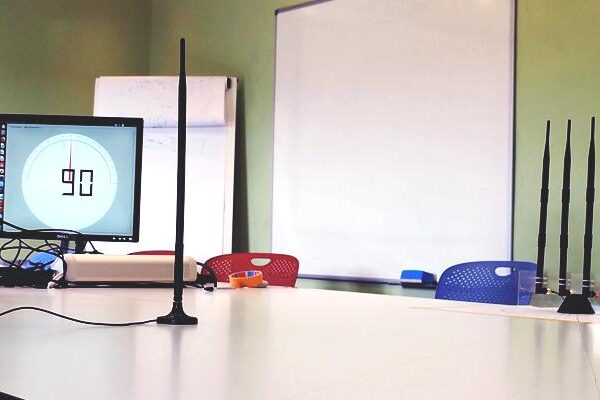
Future millimeter-wave networks to combine best of high and low frequencies
The recently-concluded study on millimeter-wave communications was a collaboration between Huawei Technologies and IMDEA Networks Institute, the Madrid-based research body pioneering many technologies that are being deployed in the new 5G landscape.
Dr. Joerg Widmer, the Principal Investigator on the project and Research Director at IMDEA Networks explains:
“A signal’s path loss increases significantly with its frequency. So, high frequency (HF) communications, like millimeter-wave systems which offer the speed and capacity that 5G and 802.11ad-standard Wi-Fi networks require, demand directional antennas in order to overcome the resulting attenuation. This results in high signaling overheads, since both ends of the communication have to continuously update their antenna steering as nodes move and blockages interrupt the line-of-sight path. These problems are avoided in low frequency (LF) networks, with their rich multi-path environment and much lower attenuation rates.”
“We’ve explored how to use low frequency bands to infer the channel characteristics of high frequency millimeter-wave bands and to support the network in terms of beam tracking, angle of arrival estimation, and location information. By studying this approach and other LF-HF channel correlations that may enable LF to assist HF, we’ve been able to develop techniques that improve performance in the millimeter-wave band and reduce the control overhead required to operate the network. We demonstrated that the mechanisms and algorithms we developed work not only in theory but also in real-world wireless networking environments during the experimental evaluation phase of the project.”

“To my knowledge, this was the first time that these two systems have been studied together, in depth. Our team of experts achieved some really interesting results, developing techniques that will enable operators to improve their performance in the millimeter-wave band and thereby reduce the control overhead they require to operate their present and future networks. Our work has already resulted in two patent applications, with a third currently being evaluated for viability.”
“One of the most important challenges was to study the channel correlation that may enable LF to assist HF”, continues Widmer. “We had to consider a lot of variables in this study, such as the scenarios, power, and delay of the signal, number of paths, and the number of antennas of each system. The IMDEA Networks team was comprised of researchers with backgrounds in math, programming languages, material physics, radiofrequency propagation and communication standards. The application of this diversity of expert knowledge, with the wealth of technical resources at our disposal, all helped to ensure our success in achieving our goals for this project.”
Reference
Pablo Jimenez Mateo, Alejandro Blanco, Norbert Ludant, Matteo Marugan Borelli, Amanda García-García, Adrian Loch, Zhenyu Shi, Yi Wang, Joerg Widmer (February 2019) A Comprehensive Study of Low Frequency and High Frequency Channel Correlation [PDF] In: International Conference on Computing, Networking and Communications (ICNC 2019), 18-21 February 2019 , Honolulu, Hawaii, USA.
 If you enjoyed this article, you will like the following ones: don't miss them by subscribing to :
eeNews on Google News
If you enjoyed this article, you will like the following ones: don't miss them by subscribing to :
eeNews on Google News



